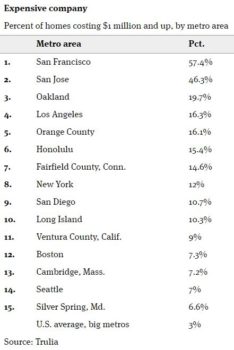We typically don’t think of love and business as existing in the same universe. But not only does love belong in the business world, says author Deb Boelkes, it should fuel everything you do, both internally and in your interactions with customers.
“Your customers are the reason you exist, and your job is to earn their love and loyalty,” says Boelkes, author of The WOW Factor Workplace: How to Create a Best Place to Work Culture. “That means you must first love them. And that, in turn, means you must first love your employees.”
Boelkes offers the following tips to help leaders inspire employees to deliver impeccable service, creating an unparalleled experience for both employees and customers that makes them both feel special, appreciated and respected.
Don’t be afraid to use the “L” word (especially on Valentine’s Day). In her book, Boelkes quotes the late Teresa Laraba, former vice president of Southwest Airlines, as saying, “Early on, when we started, one of the taglines was: ‘Somebody up here loves you.’ Our stock symbol is LUV. We were open about introducing love to corporate America and the airline industry. We were going to have a product which loved you and a company which was going to serve you and appreciate you doing business with us versus the attitude: ‘You exist to keep us in business.’”
Boelkes suggests finding fun, creative ways to show customers that you love them, such as personalized cards or putting together ‘We Love Our Customers’ gift boxes full of Valentine’s Day goodies. Or make a charitable donation to a local soup kitchen or animal shelter in honor of your customer.
Recommit to your relationship with agents and employees. Engaged employees are happy employees, and happy employees create happy customers. That’s why leaders make it a priority to work on their relationship with employees. And as with any good relationship, it means putting in time and effort. Know what’s going on with your agents and employees and find out if there’s something that’s stopping them from delivering on their work promise that day.
“If you have just two or three one-minute engagements as you walk through your workplace, it builds,” says Laraba.
Think of yourself as a “superior service” role model. When you wow customers, employees will too. If you commit to giving the best possible service to every customer and making decisions that benefit the customer first (both great ways to show you love them!), your employees will do the same. They are watching and taking cues from your behavior.
Look for the servant’s heart in those you hire (and make sure you have it, too). To win your customers’ love, you must truly love the work you do. No one should ever phone it in. Great leaders and employees alike develop what Laraba called a “servant’s heart.” She said, “We first try to hire people who care. Our hiring process is looking for people who genuinely enjoy what they do.”
Learn to look at your customers through “soft eyes.” Don’t treat them like transactions. Boelkes quotes Howard Behar, former president of Starbucks Coffee, as saying: “Rather than seeing people as customers or seeing people in their roles as bankers or teachers or authors or whatever, we need to see all people in the context of their humanness, of being a human being. Then, when you’re dealing with somebody and whatever the job happens to be, look at everybody through human eyes, through soft eyes.
Create service experiences that take the customer’s breath away. In her book, Boelkes cites her own experience with dining at Bern’s Steak House as one of her favorite examples of delightful customer service. She says the dining rooms were opulent. The menu was extensive and the food sublime. Finally, the wait staff was a testament to their mission of delivering impeccable service.
“We were so impressed with the service from our young waiter,” recalls Boelkes. “When I asked how long he had been a waiter there, he answered, ‘two weeks.’ Given his professionalism, manners, attention to detail, and superior service attitude, this was a surprise! We learned he had worked at Bern’s for two years. Everyone there starts out working in the kitchen. If they do well enough, they are promoted to assist in the dining room, and so on. Founder Bern Laxer was a firm believer in hiring for attitude and work ethic, not experience.”
Allow employees to go above and beyond for customers (in their own unique way). Take a cue from Donald Stamets—general manager for Solage, an Auberge resort in Calistoga, Calif.—and don’t make employees ask permission to go the extra mile to wow customers. As part of his Expected, Requested, and Delighted philosophy, Stamets encourages them to go above and beyond what the customer expects or requests and try to delight them at every turn.
“Likewise, tell your employees their goal is to delight customers,” says Boelkes. “Let them use their own judgment and tap into their creativity. Being allowed to do it ‘their way’ will encourage and inspire them to go in whole-heartedly.”
“Yes, it’s hard work to be a heartfelt organization, but the rewards are so much greater for you, your team, and most of all, your customers,” adds Boelkes. “Life is just better when you give and receive love every day, in all that you do. There’s no reason why this truth can’t apply to the workplace.”
Deb Boelkes is not just a heartfelt leader but an authority on creating best places to work, with 25+ years in Fortune 150 high-tech firms, leading business development and professional services teams. As an entrepreneur, she has accelerated advancement for women to senior leadership. Boelkes has delighted and inspired more than 1,000 audiences across North America.
Photo by Christopher Beloch on Unsplash






 Also, we’ve broken the data out by neighborhood provided by
Also, we’ve broken the data out by neighborhood provided by 





